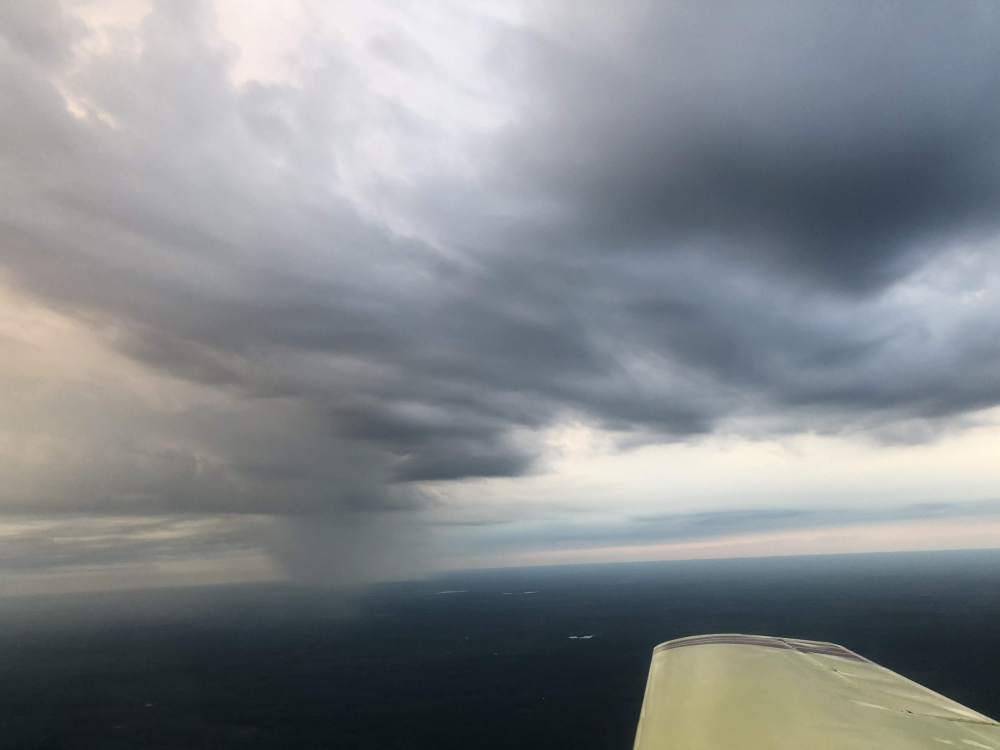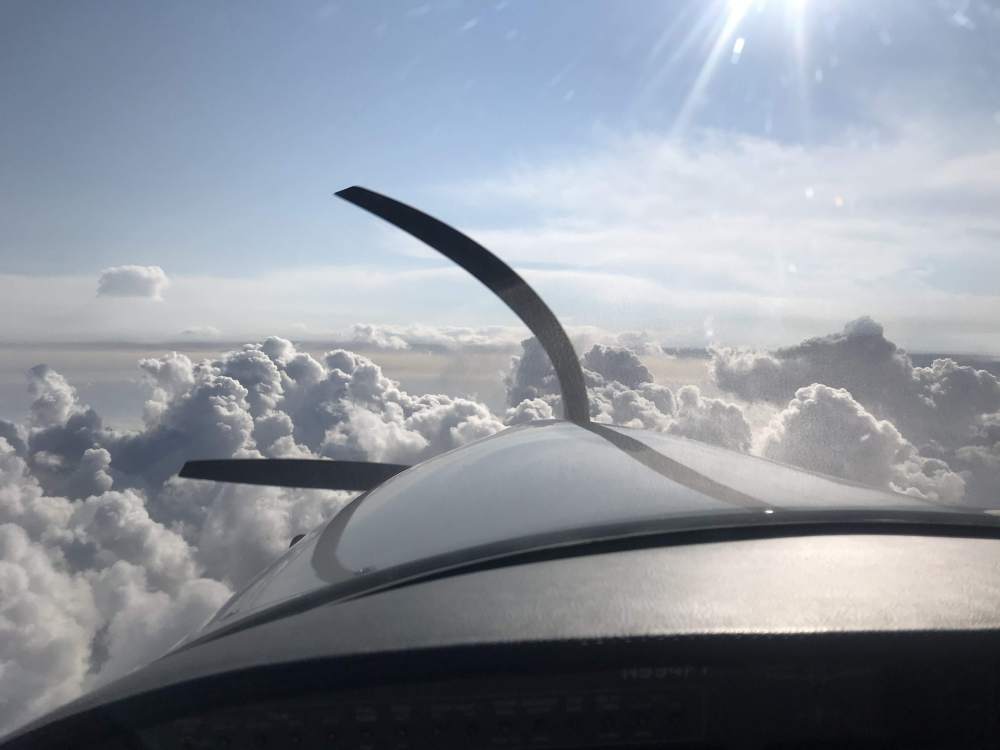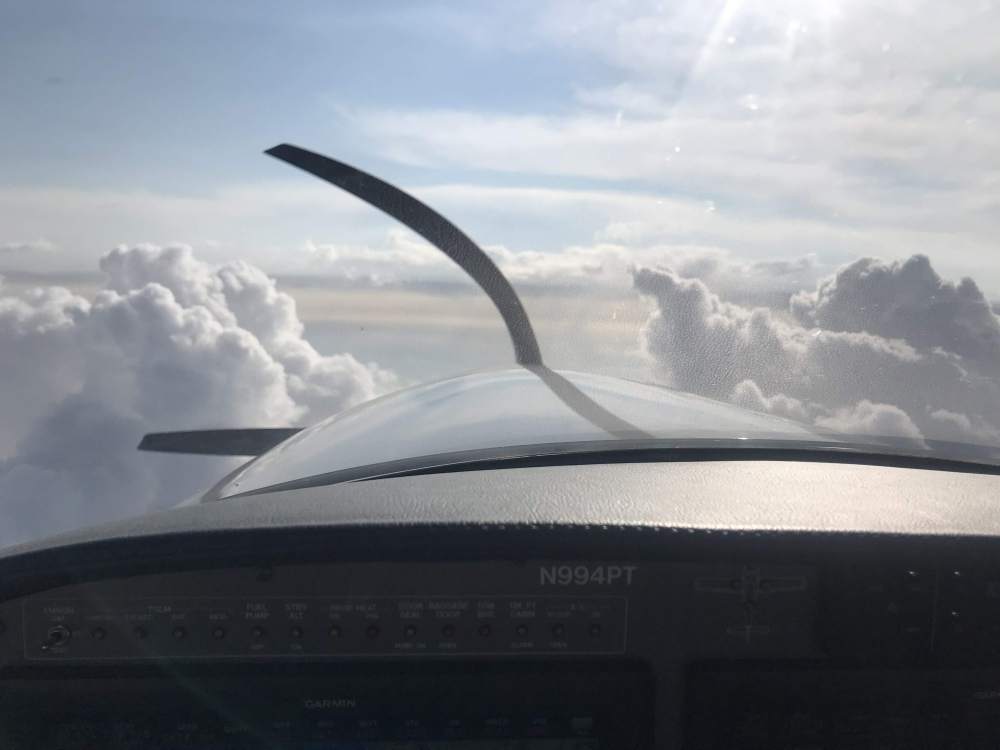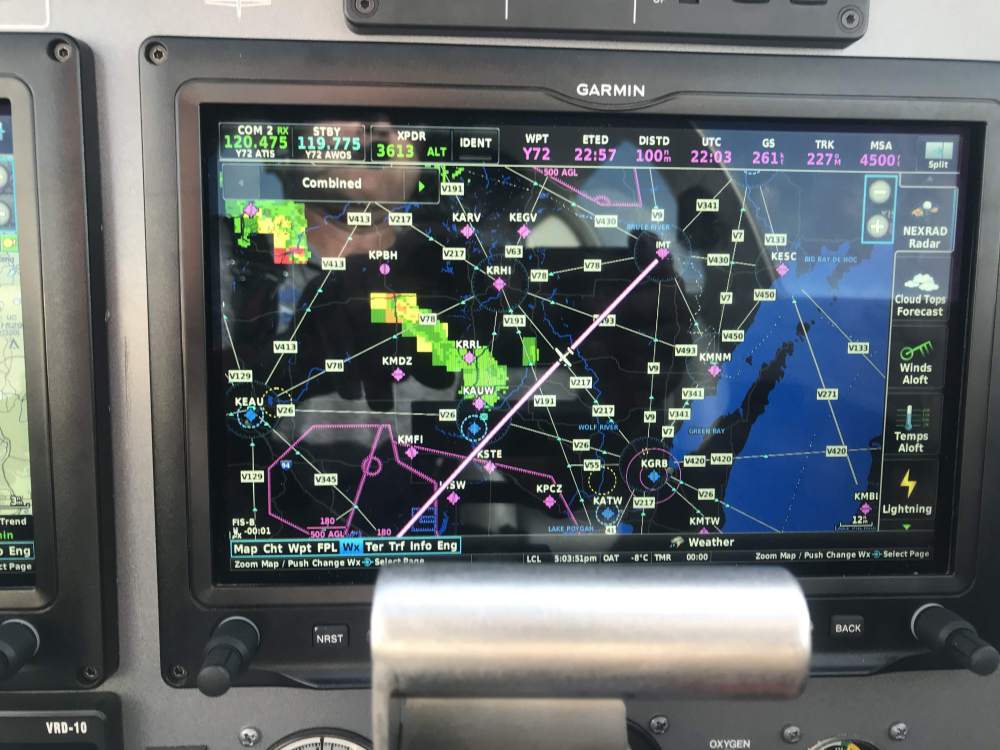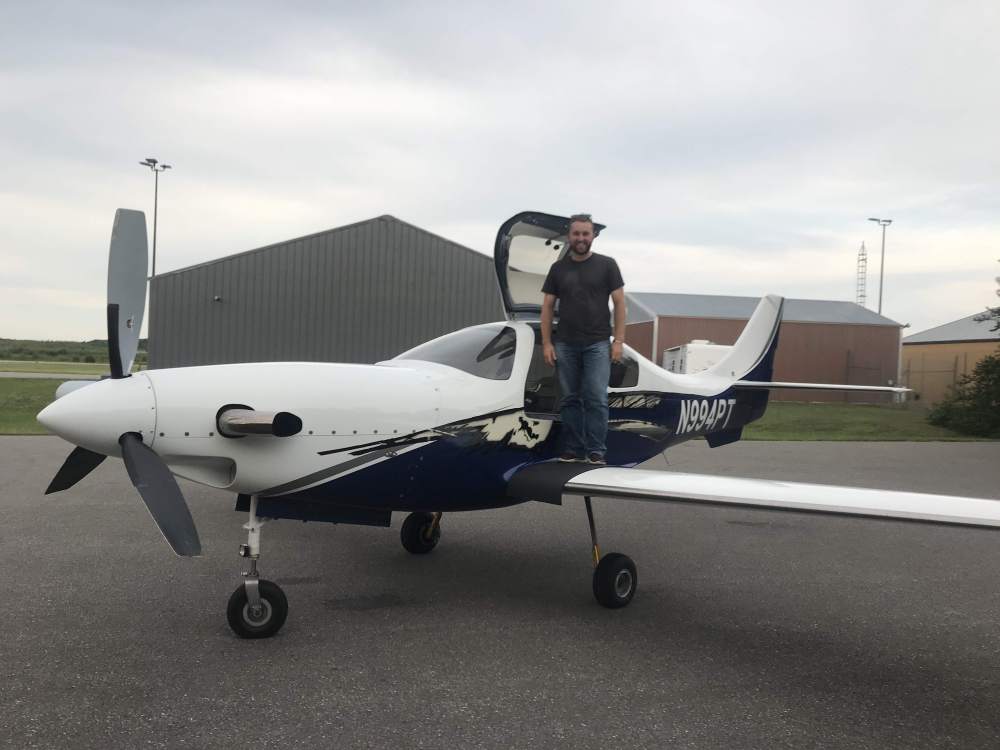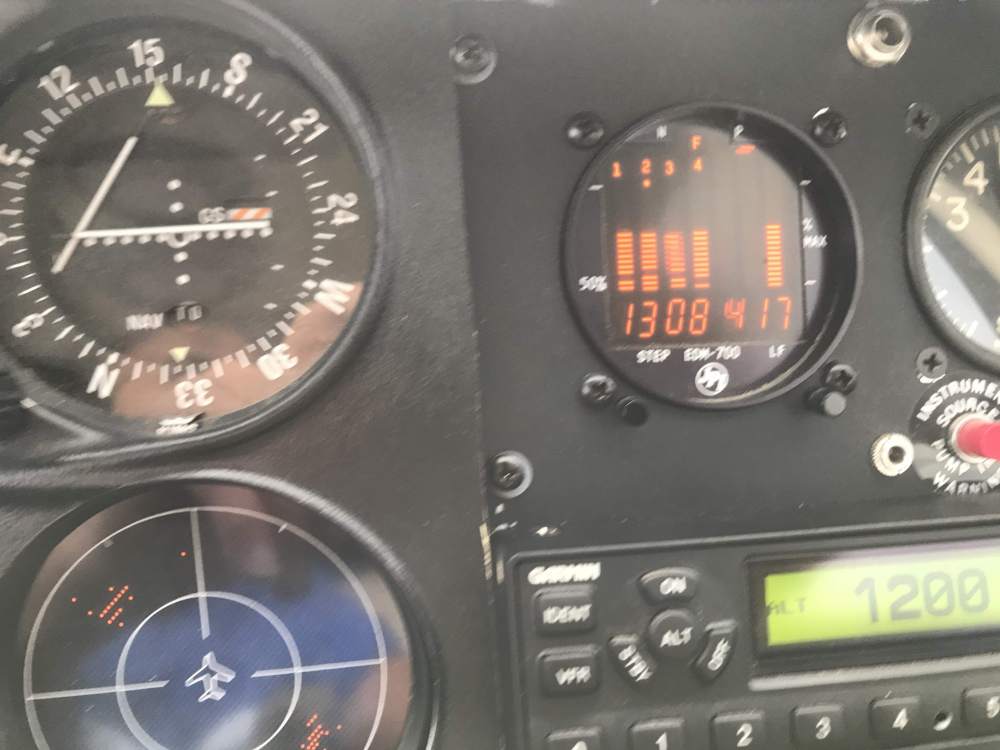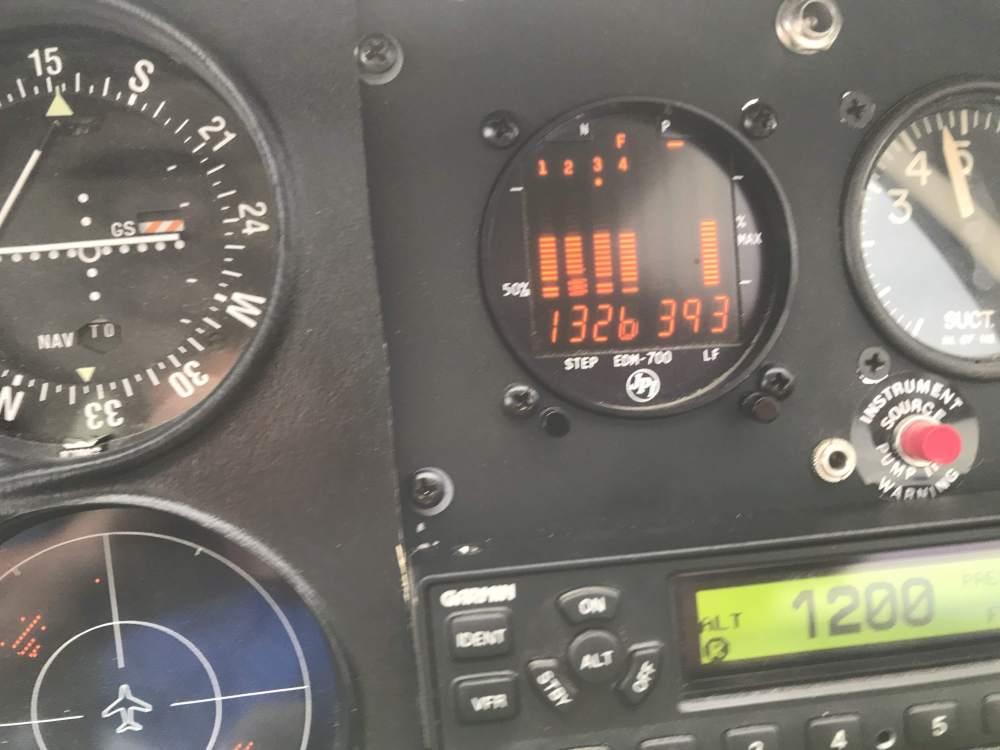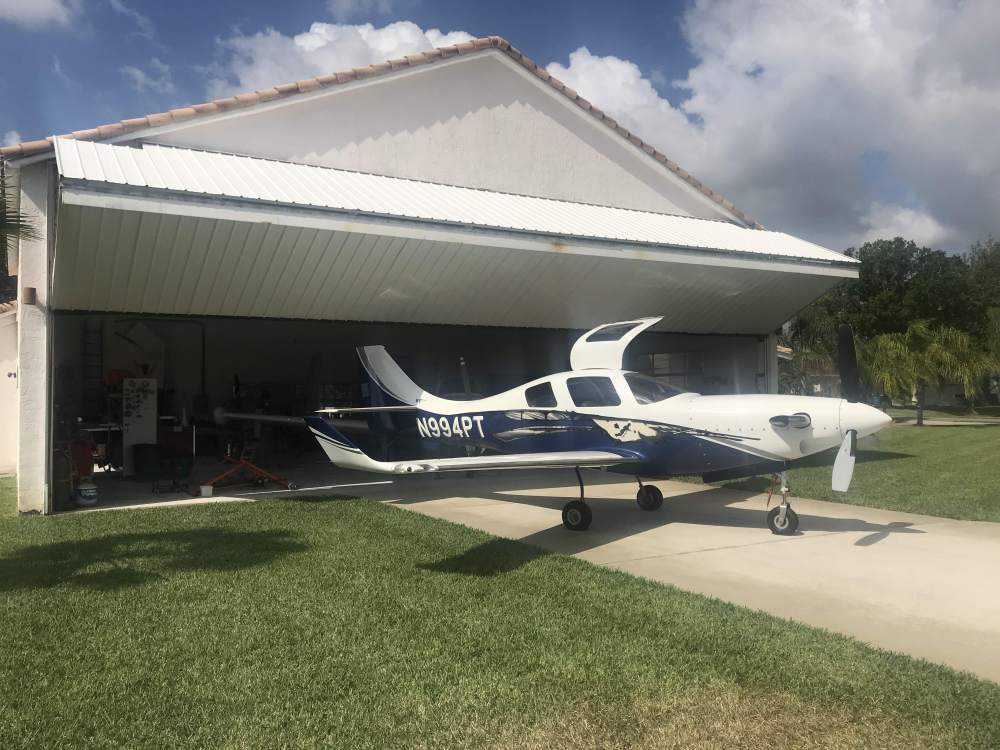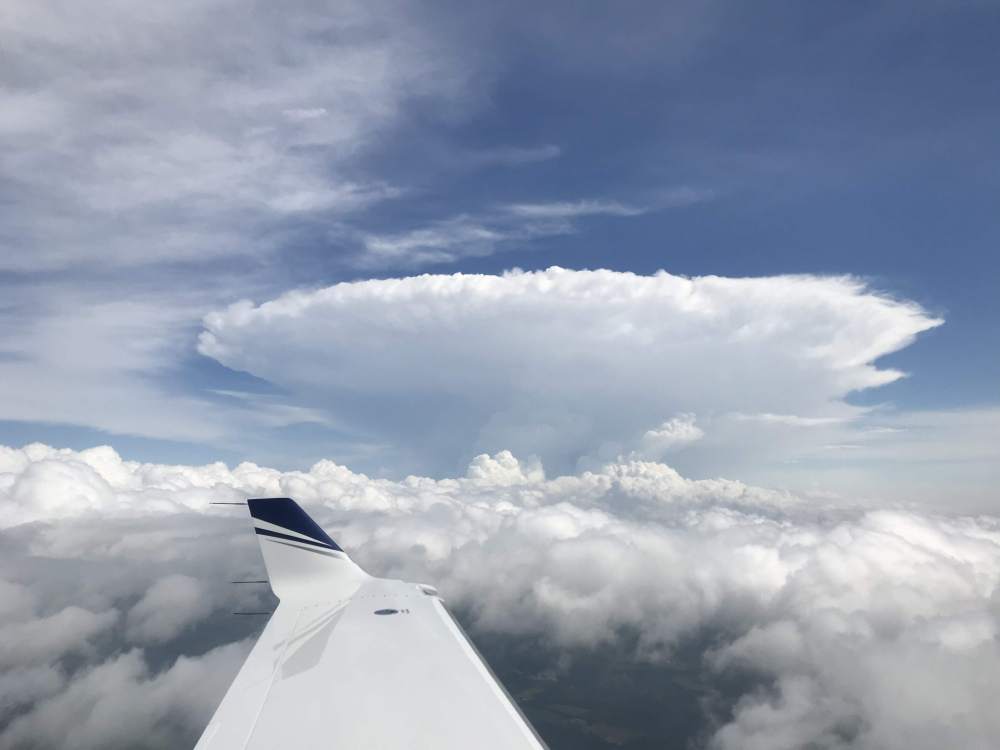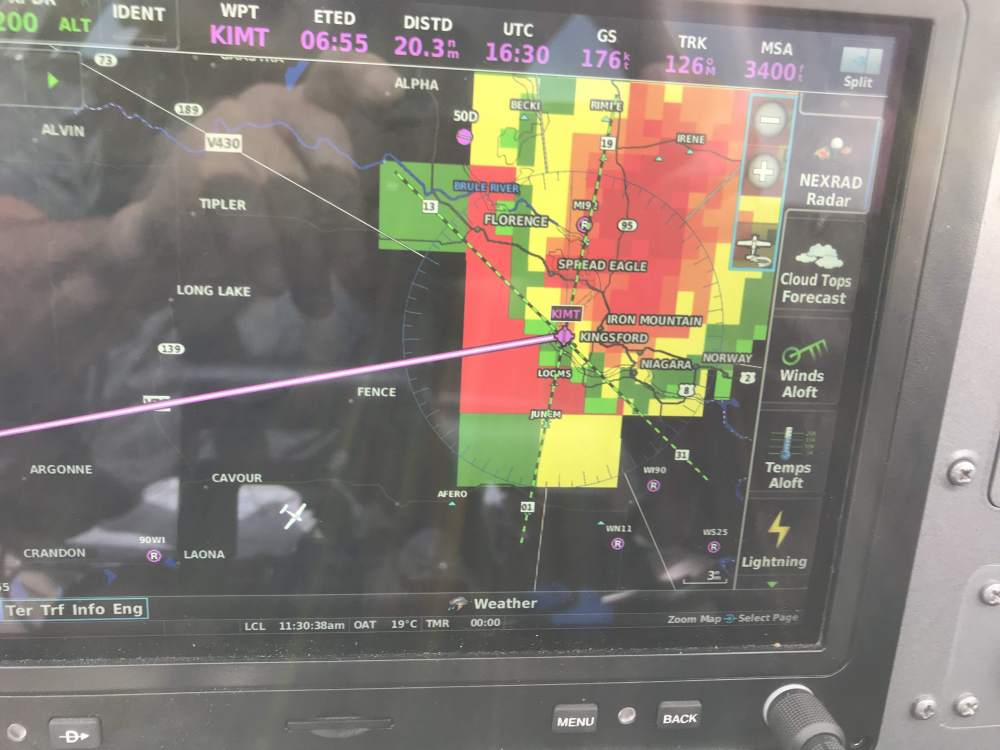-
Posts
1,616 -
Joined
-
Last visited
-
Days Won
32
Content Type
Profiles
Forums
Blogs
Gallery
Downloads
Events
Store
Everything posted by Yooper Rocketman
-
Paul, My wife and I enjoyed your and your wife’s company tremendously. We would put you up ANYTIME you graced us with your presence. But, I have to be honest, you set the bar pretty high for a first time IVPT Pilot. The only guy that took the controls on my plane prior to you (other than my training pilot John Cook) that was in the same league, was a FAA check airman, former FedEx chief pilot, with a ton of turboprop experience. Tom
-
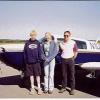
Garmin GFC 500 AP for C, D, E Mooneys
Yooper Rocketman replied to Greg Ellis's topic in Vintage Mooneys (pre-J models)
So, to clarify to @Chris Briley , I’m not pushing against rudder TRIM, just feel having the AP handle ALL changes in flight regime (climbing, descending, power increases and decreases, left and right turns) dumbs down the pilot not knowing the airplane impact from those changes. Knowing how those inputs effect the airplane, IMHO, makes you more in tune with keeping the airplane within the best flight envelope. Where will you find those characteristics most critical...... in the pattern low and slow. In those very conditions, it’s highly unlikely you will have the AP engaged. Having better stick and rudder skills in that environment takes precedence for me over “convenience” in cruise. Tom -

Garmin GFC 500 AP for C, D, E Mooneys
Yooper Rocketman replied to Greg Ellis's topic in Vintage Mooneys (pre-J models)
Funny you say that Don. When I got to right seat the Ford Trimotor and was complaining how unresponsive the plane was in turns, the chief pilot told me use my feet. Once I did it flew great (many years ago). I commented you must have realized I'm a simple GA pilot. His response was no, actually I thought you were an airline pilot. Tom -

Garmin GFC 500 AP for C, D, E Mooneys
Yooper Rocketman replied to Greg Ellis's topic in Vintage Mooneys (pre-J models)
Yes, I do. Just don't like relying on a back up for keeping fuel going to the engine. A flame out in the pattern, after a long cross country flight, is just a bit more of an issue in a kerosene burner than running a piston plane out of gas. You WILL NOT have time to relight before running out of altitude. Tom -

Garmin GFC 500 AP for C, D, E Mooneys
Yooper Rocketman replied to Greg Ellis's topic in Vintage Mooneys (pre-J models)
I never had a yaw dampener on my Rocket, medium body with 305 HP. Never had any wag. One of the critical concerns on the Lancair IVPT is flying, even for just short periods, in uncoordinated flight. With the wings designed for fuel from root to wingtip, 30-60 seconds of severely out of coordinated flight, (not hard to do with 724 HP on a 2500 pound plane), with a 1/4 tank of fuel, you will unport the line at the root. I elected to NOT hook up my yaw Servo almost 4 years ago, have yet to activate it and have found I am ridiculously better at detecting yaw. I can actually detect it in the seat of my pants now. So, if you want to become a truly better pilot, skip the yaw dampener. Tom -
I flew a friend down to Tomah WI to pick up a SUV he bought and on departure ended up waiting for a M20C departing. I headed for KRST (Mayo Clinic) to pick up a patient and when I arrived at my home airport (KIMT), saw that same Mooney sitting on the ramp. I inquired with an employee of Kubick Aviation whether they knew the owner and I was promptly introduced to Lester, @86Xray . Their customer service rep being, not only a beautiful blond bomb but, an acute sales woman, noted Tom (me) likes flying Mooney pilots in his Lancair. Maybe, if the stars aligned, I would fly down and pick him up after his annual was completed. So, today the stars aligned and I flew down and picked him up to retrieve his plane from some extensive maintenance. I enjoyed meeting and making a new friend, and I think based on his smile he enjoyed his 300+ MPH turboprop flight. Just FYI, I’m keeping a list of those that have flown with me ( @tigers2007 and@gsxrpilot ) and those that have blown off flying with me. Just kidding Erik! Nice sharing a flight with you today Lester!!! Tom
- 35 replies
-
- 14
-

-

-
The guys in the Lancairs (mostly the IVP's and IVPT's), flying closer to 300 MPH (and above), found those without static wicks had a much higher incidence of paint popping on the leading edge than those that installed them. I imagine composite aircraft are more prone to static build up too. There is a pretty rigid grounding process for those on our planes. Tom
-
Any buyer of a homebuilt/ EAB (Experimental Amateur Built) aircraft can perform maintenance on the plane, irregardless if they built it or bought it completed and flying. The only thing they can't do without a "Repairman's License" (which only a legitimate builder can get) is the Condition Inspection. EAB's don't need annuals. The yearly condition inspection (pretty much the same thing) can be signed off by an A&P. No IA requirement if you don't have the repairman's license. Tom
-

Family - not interested in flying
Yooper Rocketman replied to Fred as in Flintstone's topic in General Mooney Talk
So @Fred as in Flintstone my summary. You’re not being selfish. She is. I would not advocate leaving your wife over this situation. It’s clearly a lot more complex situation. BUT, speaking from a position of 46 years married to my first wife ..... I’m not sure if I’ll make 50 with her (for other reasons). At some point THEIR SELFISHNESS, lack of appreciation for what you contribute to the relationship and lack of consideration for YOUR desires overrides bragging rights on how long you’ve been married!!! You only get one shot at life. If your partner is totally selfish and inconsiderate of your needs, you totally have the right to assess if the negatives outweigh the positives. Tom -

Family - not interested in flying
Yooper Rocketman replied to Fred as in Flintstone's topic in General Mooney Talk
There’s been some incredibly good advice on this thread (look for my “likes”). My wife falls into the normal range. Clearly not interested in flying GA. I did all the “right” things, and had a wife tentative about flying but was willing when the “benefits” out wayed the negatives. She was prone to airsickness at the slightest amount of turbulence. I never pushed and, as a loving partner, she also attempted to be realistic. Trips where significant travel time were reduced she would even suggest we fly once comfortable about my skills, commitment to training, and experience. Several emergency landings, always on an airport, with no damage, and thankfully without HER on board were contributing factors to her comfort level as well. After a turbo failure at FL190, on the way to see my dad on his death bed (well documented here) she didn’t want to fly in my Rocket to view a property at Spruce Creek in Florida. I respected her concerns, flew down in double the time by airline, and missed buying the property by hours. Five months later another home became available and she used the same excuse about taking airline. I told her I was having serious second thoughts about buying a home in Florida (we live in the U.P. of Michigan). She asked why and I I honestly told her if you’re going to take away my flying aspect I was not sure the whole prospect was something I’m interested in. She agreed to fly my Mooney down, in late June, and was REALLY HAPPY we could depart that incredibly hot place in the summertime less than a day later. Fast forward a few years, I finished the Lancair, was only a few hours out of my phase one testing, in February 2017, and I gave HER the choice You want to fly the Mooney Rocket down, in 5.5 hours with a fuel stop and O2 up her nose (best economy, speed and safety altitudes are up high with a fire breathing turbo) or take the Lancair down in 3.5 hours, nonstop, in pressurized comfort? She said, okay, we can take the Lancair, “BUT WE’RE NOT SELLING THE MOONEY “!! We arrive at Spruce Creek in 3:25 and go to McDonalds for lunch As we’re sitting there eating she’s texting nonstop I ask what in God’s green earth are you texting ?????? She says she’s telling all her friends we’re SELLING THE MOONEY! Now she COMPLAINS if she has to fly airline!!!! Tom -
OMG, I hate that headlight dimming feature. We live down a private 1/4 mile winding woods road. I have to HOLD the dimming lever back to drive it down that stretch of road. That's just one idiotic feature on my wife's 2016 RAV. How about the radar feature in cruise? Doesn't even give you an audible it's slowing you down! A visual alert on a screen I never look at much. You just start noticing you're no longer catching the slower car in front of you. Looks like this will be our last Toyota after a string of about 5 of them. Tom
-
I lost Steve Phillips on Veterans Day last year. Fitting I guess since he loaded bombs in the Air Force in Nam. His E has sat a lot over the last 10+ years. He didn't have a lot of traveling to do, but had owned the plane for nearly 40 years. His dad was a partner in the beginning, a B-17 pilot from WWII. He had a medical issue discovered at the decline of his flying, one that required expensive tests for every medical, always being deferred for 2-3 months, then getting a one year medical that the renewal date was the day he first applied (so essentially a 9 month medical). They later discovered the issue was from birth and never was a problem. In the end, Basic Med ended that ordeal. Anyway, he worked for a Fed Ex Caravan maintenance facility, for some time earlier in his life, and all the mechanics over there were his friends. One A&P / IA (retired) that has helped me on both my Lancair IVPT and another one we are trying to finish up offered to help me get his plane a fresh annual (for no charge). It had not flown in over 2 years. Steve was an A&P, had mentioned he had a cylinder running hot and he suspected it might be an injector. We pulled them and had them professionally cleaned by Kubick Aviation on the field. The compression's were great, 72, 73. 74, 74. So after a full annual, some typical squawks, a complete AD search and compliance regimen, and a GDL 82 ADS-B solution (and pitot static, transponder, and altimeter certs), it was finally an airworthy plane again. The pilot (me) has well north of 3,000 hours Mooney time, 1400 hours "F" time, 25 hours "E" time, but no E or F time in the last 10 years. I studied the POH and had some ground review with our local (M20C owner) CFI before my first flight. With a torn right shoulder rotator cuff, swinging that manual gear was painful! I did a couple pattern circuits getting my take-off and landings down, then fueled it for a more extensive flight. Climbing out Wednesday, with it nearly 90 degrees ambient, I noticed the #2 cylinder was at 440 degrees. Holy S**t!!! I immediately dropped the climb angle, pulled the power back and got it to come down, but still in the 400's. Once at a cruise altitude, before adjusting mixture, I got it under 400. The other cylinder temps were all within 30-40 degrees. So, I read several past cylinder issue topics and determined I would check the "plenum" for leaks and swap sensors as the first two items of priority. Thursday I found a lot of minor plenum leaks (maybe a few were moderate) and sealed them up. I remounted the improperly installed access panels and installed more screws for tighter closure. I also found I had the alternate vacuum source open so closed it. I took it up Friday morning and saw 417 on climb so brought it back and pulled cowls again. I swapped #2 and #4 sensors, knowing #4 was the lowest temp cylinder in every test prior to now (spark plug washer style) and took it up again. It was warmer this flight and I saw #2 max at 403, and #4 matched the other cylinders. Clearly a bit of difference in sensor accuracy. (Wish I could swap those sensors permanently but being soldered on, not sure I want to do that). I did a bit of a cruise setting and leaned. It was better, all within 30-40 degrees, but #2 was still bumping 400. I landed and pulled both side cowls off, looked for EVERY possible leak point, and did some more sealing. I even sealed the spark plug lead wires. After everything cured (about 2:30 pm), I took it up for a longer cross country flight, climbing out during the hottest point in the day (85 degrees). Using a cruise climb of 120 MPH, and watching my speed very closely, I never got above 390 on #2. I'm thinking the sealing is helping, but maybe the extra fuel on climb is helping too. So, I leveled at 10,500' westbound towards MN, and did my lean process. I ran it 80-90 rich of peak and temps all settled in from 340-380 (#2 being the highest, but I think some of that is the sensor). I closed the cowl flaps and saw a little rise, leaving them just cracked a bit seemed to help. Is this acceptable or do I need to do more work? Steve had always claimed 155 knots after all the speed mods. My Flight Aware "Average" on a 1 1/2 hour flight west and east bound was 153 knots. But if you look at my flight, I clearly have to refine my E model hand flying skills (no AP on this bird). He probably DID get 155 knots as a better "M20E" pilot. Tom Pictures, in order are; Lean Test (before plenum sealing) Start point Lean Test (before plenum sealing) Finish point Cylinder temps in cruise after lean set, (before plenum sealing regimen).
-
And you said you wanted to ride in my Lancair but just can never find the time to stop by? That was just a teaser Erik !! Tom
-

Mooney M20 E best cruise EGT / CHT practice
Yooper Rocketman replied to Pilot boy's topic in Vintage Mooneys (pre-J models)
Great advice @takair @Matt Ward @gsxrpilot @corn_flake and @carusoam !!! Very timely for me. I just finished the Annual Inspection on Steve's 1964 "E" (my best friend/hangar partner/building buddy on my Lancair). Flew it yesterday for the first time it's seen the air in over two years. "My" last E time was maybe 10 years ago? I have a ton of F time (1400 hours) but that was back in 1996 to 2001, before my 18 year stint with my Rocket. To say it's an adjustment from the Rocket and my prop-jet would be an understatement. Sure nice to see some advice on power settings. I'm dealing with a high #4 cylinder temp, started some corrections this afternoon, and will probably start a thread on it soon. Tom -
I wonder who that might be (sarcasm alert). I can’t verify those claims, and know of no one jumping to those wingtips. Makes me a bit suspicious of the true gain (if any) to those winglets. That said, I’ve had a ton of people ask me what advantage I gain from my sexy winglets. I always respond honestly, nothing in airspeed, likely nothing in stability at altitude (the professed advantage). But, I would install them on any Lancair IVPT purely for the visual aesthetics. THEY LOOK FREAKIN AWESOME! My IVPT buddy in Australia, when hearing claims “you will LOOSE airspeed with winglets”, reminds our Lancair brethren that the two fastest turbine Lancair IVPT’s he knows of, mine and the late John Cook’s, both have winglets, and mine also has TKS! Tom
-
We have a Best Tug, supplied to us at a discount (mercy flight organization). It’s been one of the best purchases we’ve ever made! Support is great, product is great, It moves our Bonanza AND Seneca with ease. I don’t believe another product would do a better job! Tom
-

Today's flight in the year 2020
Yooper Rocketman replied to bonal's topic in Miscellaneous Aviation Talk
Flew back from MSP area to KIMT this morning. Had some weather pop up during my flight home. Spotted it 30 minutes from ETA, pulled power back to 300 Knots GS, (35 knot tailwind) and realized I wouldn’t delay it before the weather cleared. I canceled 70 miles out, flew VFR until landing, requiring some serious VFR flying. Flew a VFR arrival and got in without an alternate airport “landing” option. Here’s what the instruments showed BEFORE LANDING TOM


